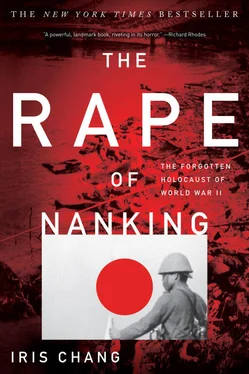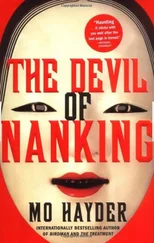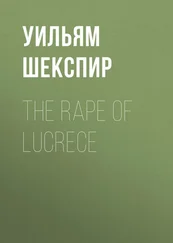ESTIMATED NUMBER OF VICTIMS OF JAPANESE MASSACRE IN NANKING
SOURCE: Document no. 1702, box 134, IMTFE records, court exhibits, 1948, World War II War Crimes Records Collection, entry 14, record group 238, National Archives.
| Tsun-shan-tang |
112,266 |
| Red Swastika Society |
43,071 |
| Shia Kwan District (sic) |
26,100 |
| Stated by Mr. Lu Su |
57,400 |
| Stated by Messrs. Jui, Chang, and Young |
7,000 or more |
| Stated by Mr. Wu |
2,000 or more |
| Stated on the Tomb of the Unknown Victims |
3,000 or more |
| TOTAL (approximately) |
260,000 |
In recent years other scholars have bolstered Sun’s study and given credence to the argument that the death toll at Nanking may have surpassed 300,000 people. For instance, in his paper “Let the Whole World Know the Nanking Massacre,” Wu Tienwei, professor emeritus of history at Southern Illinois University, estimates that the population of the city before its fall was approximately 630,000 people, a figure he concedes is far from exact but may be relatively close to the actual figure. After providing a detailed historiography of the body count research and examining the numbers carefully, he concludes that the death toll of the massacre exceeded 300,000 people—probably 340,000 people, of which 190,000 were killed collectively and 150,000 individually.
The authors James Yin and Shi Young obtained a number on the same scale—approximately 355,000—after conducting their own investigation. Although their figure already represents the high end of the spectrum of death toll estimates, Yin and Young believe that the actual number of people killed in Nanking far exceeds the number they have been able to unearth from the records. They dismiss arguments from other experts who believe that considerable overlap may exist between death statistics and who suggest, for instance, that many of the bodies the Japanese dumped in the river were washed onshore, reburied, and tallied twice in the body count. Any corpse that washed up on land, they contend, would have been buried next to the river rather than in some remote location far from the river, but according to their research, most of the burial grounds were miles away from the banks of the Yangtze. It defies common sense, they argue, that the corpses, in advanced stages of decay from exposure, would be transported up hills or mountains or across fields for burial. Moreover, Yin and Young discovered through interviews with survivors that family members of rape-and-murder victims usually buried their dead immediately and neglected to report the burials to the authorities. Since their study tabulates numbers only from the reports of mass killings—rather than individual, random murders—Yin and Young believe that the total number of deaths from the Nanking massacre lies well in the 400,000 range.
There is even compelling evidence that the Japanese themselves believed at the time of the massacre that the death toll at Nanking may have been as high as 300,000. The evidence is significant because not only was it generated by the Japanese themselves but it was done so during the first month of the massacre, when the killing was far from over. On January 17, 1938, Foreign Minister Hirota Koki in Tokyo relayed the following message to his contacts in Washington, D.C., a message that American intelligence intercepted, deciphered, and later translated into English on February 1, 1938 (parentheses in the original):
Since return (to) Shanghai a few days ago I investigated reported atrocities committed by Japanese army in Nanking and elsewhere. Verbal accounts (of) reliable eye-witnesses and letters from individuals whose credibility (is) beyond question afford convincing proof (that) Japanese Army behaved and (is) continuing (to) behave in (a) fashion reminiscent (of) Attila (and) his Huns. (Not) less than three hundred thousand Chinese civilians slaughtered, many cases (in) cold blood.
It is tempting to suggest that if Chiang Kai-shek had pulled out his armies during the mass government evacuation from Nanking in November and left behind a defenseless city, perhaps wholesale massacre could have been averted. But a minute’s thought shows the weakness in that argument. The Japanese, after all, had spent the preceding few months systematically destroying entire villages and cities on their warpath to Nanking and committing similar atrocities elsewhere. Clearly they needed no provocation from the Chinese for their actions. All we can say for certain is that a city devoid of Chinese soldiers would have—at the very least—taken away the Japanese excuse that serial executions were necessary to eliminate the soldiers hiding among the civilian population. But there is no evidence to suggest that it would have changed their actions.
It is also tempting to suggest that if Chiang had refrained from ordering a senseless last-minute withdrawal from Nanking and had instead fought to the last man to save the city, the city’s fate would have been different. But here again we must be careful. Head-to-head combat would certainly not have worked. The Japanese were much better armed and trained and would surely have overcome the Chinese forces sooner or later. But a lengthy, drawn-out struggle using guerrilla-style tactics might have demoralized the Japanese and elevated the Chinese. If nothing else, many more Japanese soldiers would have died fighting the Chinese and their arrogance toward the Chinese soldier would have been muted by a fierce resistance.
5. THE NANKING SAFETY ZONE
IN THE HISTORY of every war, there are always a few rare individuals who emerge as beacons of hope for the persecuted. In the United States the Quakers freed their own slaves and helped establish the Underground Railroad. In Europe during World War II, Oskar Schindler, a Nazi, expended his fortune to save twelve hundred Jews from the Auschwitz gas chambers, and Raoul Wallenberg, a Swedish diplomat, saved more than one hundred thousand Jews by giving them false passports. Who can forget Mies Giep, the Austrian woman who together with others hid the young Anne Frank and her family in an Amsterdam attic?
Dark times paralyze most people, but some very few, for reasons most of us will never understand, are able to set aside all caution and do things even they could not imagine themselves doing in ordinary times. It is hard to talk about a bright spot in the horror that is the Rape of Nanking, but if one can, it is surely to shine a light on the actions of a small band of Americans and Europeans who risked their lives to defy the Japanese invaders and rescue hundreds of thousands of Chinese refugees from almost certain extermination. These courageous men and women created the International Committee for the Nanking Safety Zone. This is their story.
The decision to create a safety zone in the city of Nanking arose almost spontaneously, within weeks of the collapse of Shanghai. In November 1937, Father Jacquinot de Bessage, a French priest, established a neutral area in Shanghai to shelter 450,000 Chinese refugees whose homes had been destroyed by the invading Japanese soldiers. When the Presbyterian missionary W. Plumer Mills learned of Bessage’s project, he suggested to his friends that a similar zone be created in Nanking. Mills and some two dozen other people (mostly American, but also German, Danish, Russian, and Chinese) ultimately designated a region slightly west of the center of the city as a safety zone. Within the zone were situated Nanking University, Ginling Women’s Arts and Science College, the American embassy, and various Chinese government buildings. In setting up the zone, the committee sought to offer refuge for noncombatants caught in the cross-fire between the Japanese and Chinese militaries. The foreigners had every intention of shutting the zone down a few days or weeks after the city passed safely into Japanese hands.
Читать дальше











